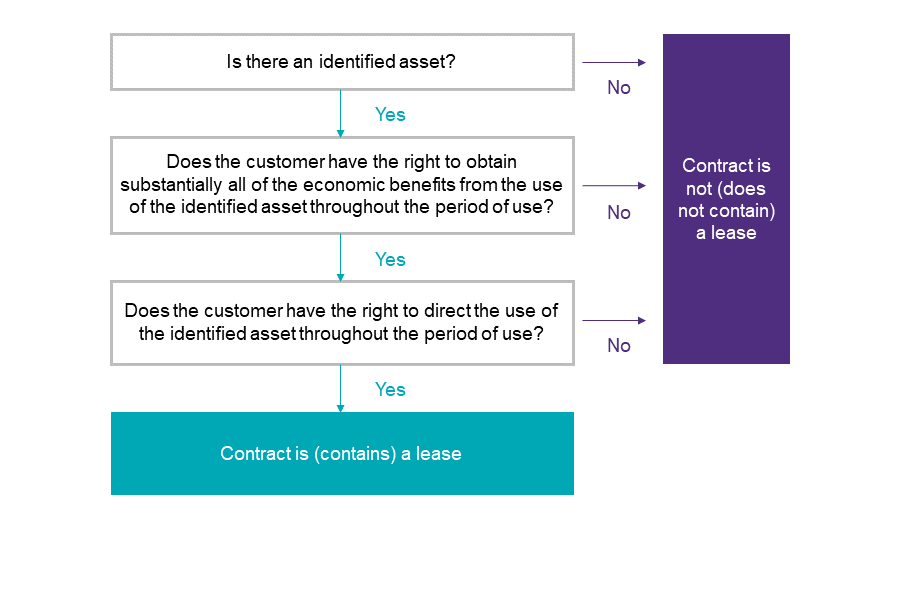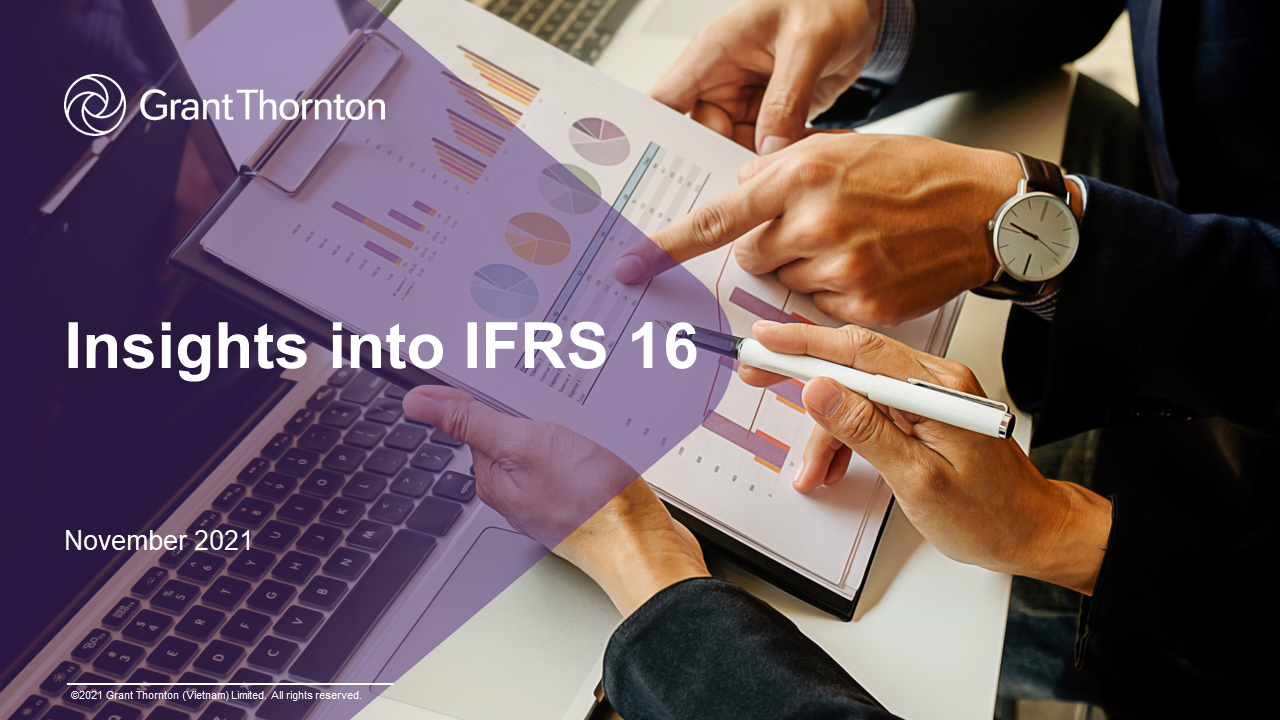-
International Financial Reporting Advisory Services
IFRS reporting advisory serivces of Grant Thornton are carried out by our dedicated team with expertise in IFRS implementation.
-
Audit Services
• Statutory audit • Review of financial statements and financial information • Agreed-upon procedures • FRAS services • Compilation of financial information • Reporting accountant • Cross-border audit • US GAAP audit
-
Audit Quality
We have various methods of monitoring our system of quality control and engagement quality, including real-time involvement of coaches and national office personnel on select audit engagements, reviews of issuer audit engagements prior to archiving by someone outside of the engagement team, and internal inspections of assurance engagements and the system of quality control.
-
Audit Approach
Audit Approach
-
Licensing services
Licensing services
-
International tax planning
Our extensive international network provides us with significant resources to meet all your expansion goals. We strive to develop commercially focused and tailored tax strategies to minimise tax exposures and maximise business efficiency.
-
Expatriate tax planning
We have a broad knowledge base and skills to assist you keep your personal income taxes to a legitimate and reasonable level, while remaining compliant with legislation. We can develop a personalised package for each key employee to take maximum advantage of the exemptions and incentives available.
-
Tax advisory
We will review the proposed business model and transactions and advise on tax implications and recommendations to optimize the tax opportunities under the local regulations and treaties which Vietnam entered into. Furthermore, we coordinate with our GT global tax team to provide a comprehensive tax advisory for the countries involved in the business model and transactions.
-
Tax compliance services
This service is designed to assist enterprises to cope with the statutory tax declaration requirements in line with the Vietnamese tax laws as well as the frequent changes and updates in tax laws.
-
Tax health check
Our Tax Health Check involves a high-level review of specific tax areas to highlight the key issues that need to be rectified in order to reduce tax risks. Through our extensive experience, we have identified key risk areas in which many enterprises are not fully compliant or often overlook potential tax planning opportunities. Our tax health check service represents a cost-effective method to proactively manage risks and reduce potential issues arising as a result of a tax inspection.
-
Transfer Pricing
Transfer pricing is a pervasive tax issue among multinational companies. In Vietnam, the tax authorities require special documentation to report related party transactions. Compliance with transfer pricing regulations is an important aspect of doing business effectively in Vietnam as failure to do so may result in significant penalties.
-
Tax due diligence
We conduct tax due diligence reviews of target companies to analyse their tax exposure and position in relation to acquisitions, mergers or consolidations. We are able to integrate this service with our Advisory Services department in order to offer a comprehensive, holistic due diligence review.
-
Customs and international trade
Our experienced professionals can help you manage customs issues more effectively through valuation planning and making use of available free trade agreements. We also assist Clients in optimising their customs procedures by making use of potential duty exemptions and efficient import-export structures. Risk mitigation activities include customs audit defense and compliance reviews.
-
M&A Transaction
We advise numerous foreign investors on efficient tax structures for their investments. Our experience allows you to consider all the options and set up a corporate structure that meets both operational and tax efficiency requirements. In short, the structure that is best for you.
-
Industrial Zones – Picking A Location For Your Business
Grant Thornton Vietnam’s one-stop services are designed to provide comprehensive support to both new and current investors who are planning to expand or restructure their business in Vietnam. Our professionals have established strong working relationships with landlords, property developers and authorities at various localities. With extensive experiences in liaison with the relevant agencies, we offer assistance including negotiation on land rental rates and efficient management of licensing process. Our customized and flexible solutions can bring benefits of cost efficient location, accelerate licensing process, and optimize tax opportunities while remaining in compliance with legislation.
-
Tax Audit Support
Tax audit support services provide comprehensive assistance to your business in Vietnam. Recent tax practices have shown the general tendency of launching routine tax audit on yearly basis. Tax authorities have been effectively using more sophisticated methods to identify target entities from across different industry sectors.
-
Business Risk Services
Business Risk Services
-
Transaction Advisory Services
Transaction Advisory Services
-
Valuation
Valuation
-
Business consulting services
Finance Management Advisory
-
Accounting services
Accounting services
-
Taxes compliance within outsourcing
Taxes compliance within outsourcing
-
Payroll, personal income tax and labor compliance
Payroll, personal income tax and labor compliance
-
Secondments/Loan staff services
Secondments/Loan staff services
-
Compilation of the financial and non-financial information
Compilation of the financial and non-financial information
-
Accounting systems review and improvement
Accounting systems review and improvement
-
Initial setting-up for accounting and taxes systems
Initial setting-up for accounting and taxes systems
-
Management accounting and analysis
Management accounting and analysis
-
Comprehensive ERP system solution
ERP software is a tool for business operations, production management, order processing and inventory in the business process. Today, ERP software for small and medium businesses has been greatly improved to help businesses manage their business better. The article below will answer all relevant information about what ERP software is and offer the most suitable ERP solution for businesses. Let's follow along!
-
Analyze Business Administration data
We believe in the value that data can bring to the success and development of every business. Our team helps design data architecture supported by tools, to support business governance and provide useful information to management.
-
Financial reporting compliance solution package
Putting financial issues at the heart, this service helps ensure that financial reports for customers comply with both the requirements of Vietnamese accounting regulations and standards (VAS) as well as reporting standards. international finance (IFRS).
-
Third-party ERP extensions
ERP is a long-term solution that requires long-term travel, not short-term. We understand that many businesses cannot deploy the entire ERP system at once due to many different reasons, instead businesses can deploy each part. Over time, these solutions can be expanded to accommodate improved business processes or can even link completely new processes across different departments.
-
Localize, deploy and rebuild the project
Quite a few ERP projects need to be implemented according to current Vietnamese requirements and regulations, but still comply with common international business requirements. These projects need some improvements and adjustments in the right direction.
-
Consulting on technology solutions
We support the selection and implementation of the most suitable solutions, ensuring business efficiency and performance. We will work closely with customers to plan, evaluate and implement the right technology investment strategies and solutions to meet the development needs of businesses.

-
Offshore company establishment service
Using the offshore company model will facilitate the owner in the process of transaction and expand overseas markets, take advantage of the tax policy with many incentives and protect the value of the family enterprise's assets.
-
Private Trust Advisory
The development of the economy with many modern financial instruments has brought many advantages and opportunities for the enterprises, but there are still certain potential risks in any type of business. So how to protect your asset value with an appropriate company structure while stay compliance with relevant regulations?
-
Our values
We have six CLEARR values that underpin our culture and are embedded in everything we do.
-
Learning & development
At Grant Thornton we believe learning and development opportunities help to unlock your potential for growth, allowing you to be at your best every day. And when you are at your best, we are the best at serving our clients
-
Global talent mobility
One of the biggest attractions of a career with Grant Thornton is the opportunity to work on cross-border projects all over the world.
-
Diversity
Diversity helps us meet the demands of a changing world. We value the fact that our people come from all walks of life and that this diversity of experience and perspective makes our organisation stronger as a result.
-
Contact us
Contact us
-
Available positions
Experienced hires
-
Available positions
Available positions
Definition of a lease
IFRS 16 represents the first major overhaul of lease accounting in over 30 years. The Standard will affect most companies that report under IFRS and are involved in leasing, and will have a substantial impact on the financial statements of lessees of property and high value equipment.
IFRS 16 changes the definition of a lease and provides guidance on how to apply this new definition. As a result, some contracts that do not contain a lease today will meet the definition of a lease under IFRS 16, and vice versa.
Under IFRS 16 a lease is defined as ‘a contract, or part of a contract, that conveys the right to use an asset (the underlying asset) for a period of time in exchange for consideration’.
A contract can be (or contain) a lease only if the underlying asset is ‘identified’. Having the right to control the use of an identified asset means having the right to direct, and obtain all of the economic benefits from, the use of that asset. These rights must be in place for a period of time, which may also be determined by a specified amount of use.
Applying the new definition involves three key evaluations, all of which must be met in order to conclude that a contract is or contains a lease. These evaluations are summarised in the following flowchart:

Is there an identified asset?
An identified asset is an asset that is either:
- explicitly identified in the contract, or
- is implicitly specified by being identified at the time that the asset is made available for use by the customer.
Even if an asset is explicitly specified, a customer does not have the right to use an identified asset if the supplier has a substantive substitution right throughout the period of use.
What is a substantive substitution right?
A substantive substitution right exists if the supplier has the practical ability to substitute alternative assets throughout the period of use and the economic benefits of substituting the asset would exceed the cost (or in other words, the supplier would benefit economically from substituting the asset).
The assessment of whether a supplier’s substitution right is substantive is based on facts and circumstances present at inception of the contract. This means that the customer ignores events that are not likely to occur in future such as:
- an agreement by a future customer to pay an above-market rate for use of the asset
- the introduction of new technology that is not substantially developed at inception of the contract
- a substantial difference between the performance or customer’s use of an asset, and the use or performance considered likely at inception of the contract, and
- a substantial difference between the actual market price of the asset during the period of use, and the market price considered likely at inception of the contract.
Can a portion of an asset be an identified asset?
A portion of an asset is an identified asset if it is physically distinct (e.g. a single floor of an apartment building). Where a portion of an asset is not physically distinct (e.g. 20% of the capacity of an oil pipeline), the portion of the asset is not an identified asset unless it represents substantially all of the capacity of the asset. If neither of these situations exist, the customer is not provided with the right to obtain substantially all the economic benefits from use of the asset and an identified asset does not exist.
Does the customer have the right to obtain substantially all of the economic benefits from the use of the identified asset throughout the period of use?
The second evaluation involves determining whether a customer has the right to obtain substantially all of the economic benefits from use of the identified asset throughout the period of use. There are many ways that a customer can obtain those economic benefits such as by using, holding or sub-leasing the asset.
When making this evaluation, a customer considers its rights within the defined scope of the contract. For example, if a contract specifies that a customer can only print up to a specified number of pages during the period of use of a printer, the customer considers only the economic benefits arising from use of the printer for those pages, and not beyond. Variable lease payments based on the customer’s use of the asset (e.g. variable payments based on sales) do not prevent a customer from obtaining substantially all of the economic benefits from the use of the asset.
Although the customer passes on some of the benefits to the supplier through variable payments, the customer is still the party that receives the economic benefits arising from use of the asset (in this case, the cash flows arising from the sales). IFRS 16 is explicit on this point to eliminate the possibility that companies might include variable lease payments solely to avoid the arrangement being classified as a lease and therefore lease accounting.
Does the customer have the right to direct the use of the identified asset throughout the period of use?
In evaluating whether the customer has the right to direct the use of an identified asset, a customer must have the right to direct ‘how and for what purpose’ the asset is used throughout the period of use. In making this evaluation, a customer considers the decisions that most directly impact the economic benefits to be derived from the use of the asset, including:
- rights to decide the type of output to be produced by the asset(s);
- rights to decide when the output is produced;
- rights to decide where the output is produced; and
- rights to decide whether the output is produced and the quantity thereof.
In many cases, contracts will include terms and conditions that protect the supplier’s interest in the asset, protect its personnel and/or ensure the supplier complies with laws and regulations. These rights are considered to be protective and do not, in isolation, prevent the customer from having the right to direct the use of the asset within the scope of the contract.
Lastly, IFRS 16 is clear that rights to operate or maintain an asset do not give a customer the right to direct how and for what purpose the asset is used, except for when the ‘how and for what purpose’ decisions are predetermined. In this case, the customer will control the asset if the customer has the right to operate the asset throughout the period of use or the customer designed the asset in a way that predetermines how and for what purpose the asset will be used throughout the period of use.
Transition considerations
On transition to IFRS 16, both lessees and lessors can choose whether to apply the new lease definition to all of their contracts or apply transitional relief from reassessing whether contracts in place at the date of initial application are, or contain, a lease. If an entity chooses to apply this relief, then the new lease definition will be applied to contracts entered into or modified on or after the date of initial application (1 January 2019 for calendar year end entities).
Our full publication on “Insights into IFRS 16”
For full information of our insights into IFRS 16, please read our full report in English at the following link:







